Recent Articles
Popular Makes
Body Types
2021 Toyota RAV4 Road Test and Review
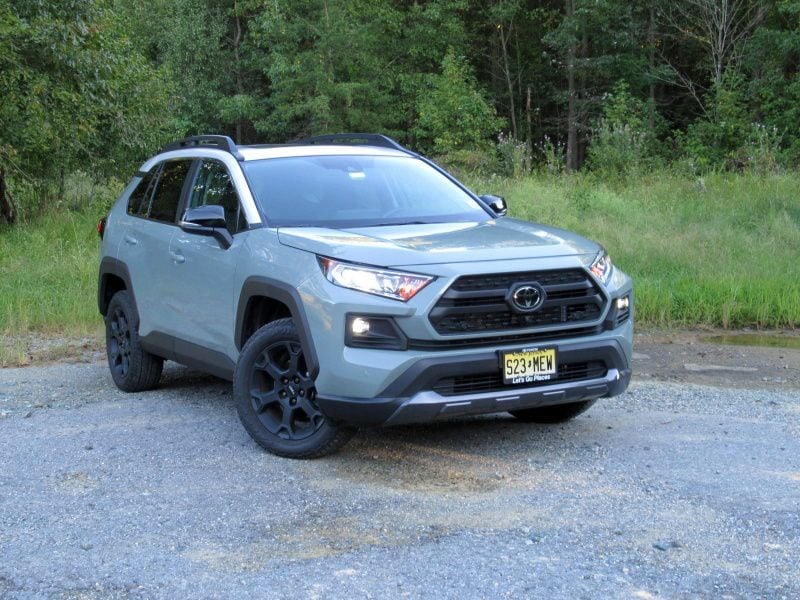
2020 Toyota RAV4 ・ Photo by Brady Holt
They’re everywhere. The compact crossover SUV has taken over the country, and the 2021 Toyota RAV4 has taken over the compact crossover SUV has taken over its segment. It’s the best-selling model in the hottest-selling market segment.
Not surprisingly, there’s a lot to like about the RAV4. It has a wide range of models, which start at an affordable $26,250. Its uncommonly rugged styling stands out from more car-like competitors. It’s roomy, easy to drive, and economical, especially if you choose one of its two hybrid variants. Still, many competitors are also impressive. While we like a lot about the RAV4, we wouldn’t say everyone should buy it automatically. Let’s go over its pros and cons to see if it’s the perfect fit for you.
Looks Like an SUV
The RAV4 has gone through a lot of styling themes. It started out as a cheekily hardy-looking little guy in 1996, morphed into a bigger and more generic crossover in 2006, became sportier-looking in 2013, and for its current generation — introduced in 2019 — it has decided to play up its SUV attributes.
While most compact crossovers are content to look like tall cars — or sometimes even tall sports cars — the RAV4 borrows design cues from Toyota’s hardy 4Runner SUV and Tacoma pickup, and the result is a crossover that looks more rugged than most competitors. Its upright front end, angular headlights and taillights, and flared fenders signal that the RAV4 belongs to a family of trucks, not mere cars. It’s not over the top, though, to our eyes — just classically handsome and confident-looking. Choose the Adventure or TRD Off Road model, and you get additional styling cues along with genuine advantages in messy terrain. The RAV4 Hybrid and RAV4 Prime are also available in a sport-themed XSE model, but the standard gas RAV4 is not.
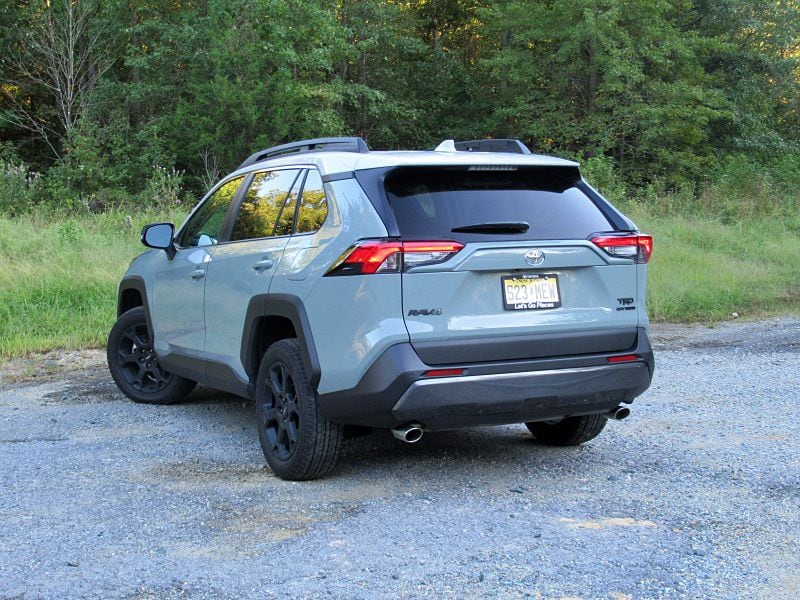
Photo by Brady Holt
Rugged Interior
Like many modern vehicles, the 2021 Toyota RAV4 has an infotainment touchscreen perched on the top of its dashboard. This approach hasn’t won universal acclaim, but it accommodates a big screen without changing the whole dash. The touch screen measures a modest 7 inches on entry-level RAV4s, while upper-trim models have a more competitive 8-inch unit. Both screens support Apple CarPlay and Android Auto smartphone integration, and both have convenient physical buttons and knobs for common functions.
Where the RAV4 stands apart from the crossover norm is the rugged cabin vibe. The door pulls and even the dashboard knobs are trimmed in durable rubber, subtly reemphasizing Toyota’s commitment to making this an off-road-friendly crossover. Poke all the plastics and you’ll find some that feel a little basic for the price, but the ambiance remains appropriate — particularly given that the RAV4 doesn’t pretend to be extra-fancy. It’s hardly bare-bones, but it doesn’t try to be posh like some competitors. The Adventure and TRD add splashes of color on the dashboard and console, but you won’t get woodgrain trim like some competitors. One clear downside is the basic-feeling sun visors, which slam cheaply against the roof when folded away.
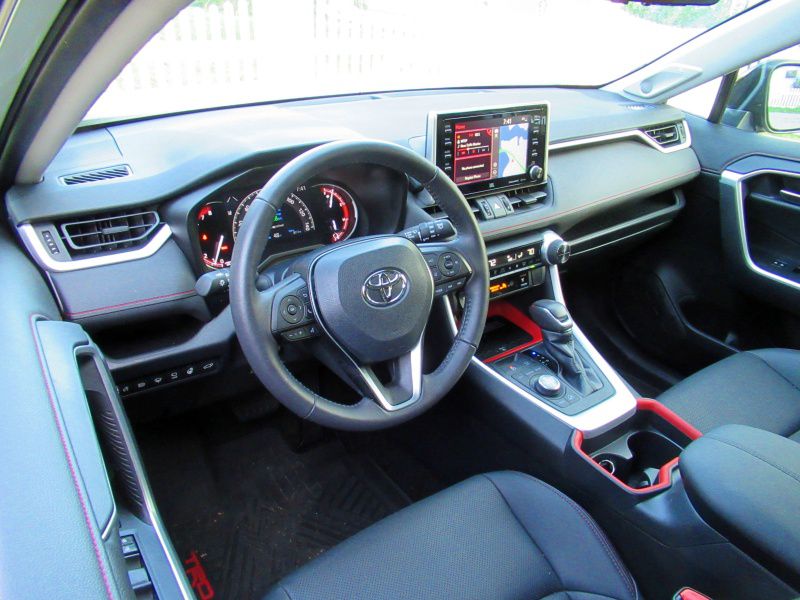
Photo by Brady Holt
Comfortable Cabin
The RAV4 has a roomy and comfortable cabin that can fit up to five passengers. The front seats are agreeably supportive, and the rear seat has good legroom and headroom. We wish the rear cushion were higher like in the previous-generation RAV4, which had been even more comfortable, but the current model remains pretty good for a compact SUV.
Our RAV4 test cars have all included Toyota’s SofTex leatherette upholstery, which passes easily for true leather. Entry-level models have cloth, but true cowhide isn’t offered on any RAV4. Heated front and rear seats, along with ventilated front seats, are available on select RAV4 models, while a power-adjustable driver’s seat is standard equipment on all but the base model.
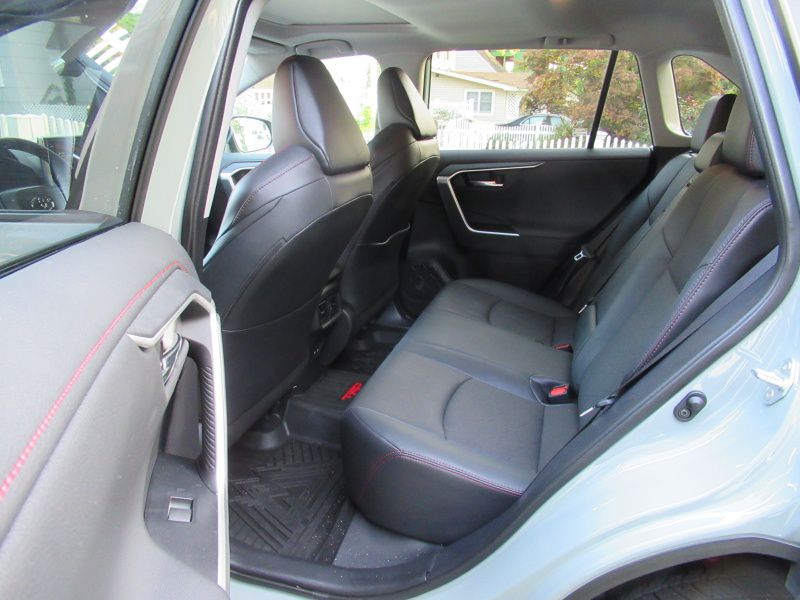
Photo by Brady Holt
Competitive Cargo Space
The RAV4 is a usefully spacious small SUV, with plenty of room to toss your stuff in the back, especially if you fold down the 60/40 split-folding rear seat. However, some competitors are even roomier.
By the numbers, the RAV4 provides an excellent 37.6 cubic feet of cargo room behind its rear seat, though maximum cargo capacity with the rear seat folded is unremarkable for the class: 69.8 cubic feet. The competing Honda CR-V has more, and it also has a lower cargo floor that’s convenient for loading and unloading bulky items. The RAV4 tows well, though, especially if you upgrade to the Adventure or TRD Off Road. Those trim levels can pull a trailer weighing up to 3,500 pounds, which is excellent for this class. Other models with the gas engine offer a more typical 1,500-lb limit, while the RAV4 Hybrid manages 1,750 lbs and the RAV4 Prime plug-in hybrid can tow up to 2,5000 lbs.
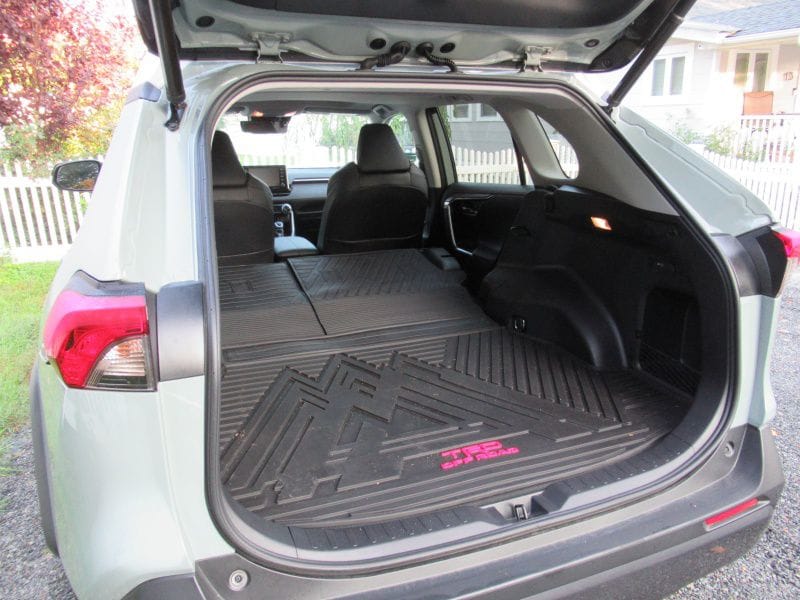
Photo by Brady Holt
Agreeable Ride and Handling
The RAV4 isn’t an exciting vehicle to drive, but we had few complaints with its smooth ride and relatively agile handling. The RAV4 doesn’t feel like an extra-solid, extra-expensive SUV — some bumps do make the vehicle shudder a bit — but it doesn’t bounce you around uncomfortably. Nor does the steering feel vague and disconnected from the road; while this isn’t a sporty, engaging vehicle, it tackles curves with confidence. At the same time, the steering lightens up nicely for easy low-speed maneuvers.
This agreeable on-road demeanor is all the more impressive when you consider that the RAV4 is also relatively capable in dirt and mud, especially the TRD Off Road model we most recently tested. It has a revised suspension and comes standard with off-road-focused tires. And like the nearly as capable Adventure model, it has a sophisticated torque-vectoring all-wheel-drive system and separately tailored driving modes for Mud and Sand, Rocks and Dirt, and Snow. That's in addition to the choice of Eco, Normal, and Sport modes that you can get in any RAV4.
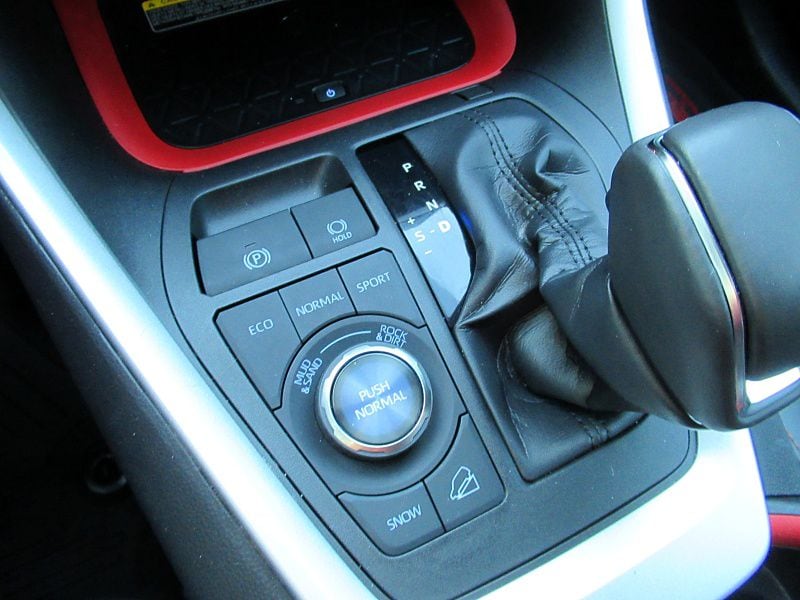
Photo by Brady Holt
Lots of Horsepower, Lots of Noise
The RAV4 has an uncommonly potent standard engine for a compact crossover — at least on paper. It’s a 2.5-liter four-cylinder that sends 203 horsepower and 184 lb-ft of torque through an eight-speed automatic transmission. We’ve found this powertrain to be smooth and responsive in some Toyotas, but in the RAV4, it revs loudly even for moderate acceleration, making the vehicle feel strained.
We prefer the RAV4 Hybrid, which is quicker, quieter, and far more economical. Standard RAV4s manage solid EPA ratings of 30 mpg in mixed driving with front-wheel drive, or between 28 and 30 mpg with all-wheel drive, depending on the trim level. The RAV4 Hybrid, sold only with AWD, is rated at 40 mpg; you’ll get even more benefit if you drive a lot at lower speeds and stop-and-go conditions, where hybrids can thrive and gas-only cars perform the worst. We’ve averaged 30 mpg when testing the gas RAV4 and a whopping 46 mpg behind the wheel of the hybrid. There’s also the RAV4 Prime plug-in hybrid, which can travel an EPA-estimated 42 miles on electricity before operating like a standard RAV4 Hybrid; it also offers extra-quick acceleration thanks to its potent electric motors.
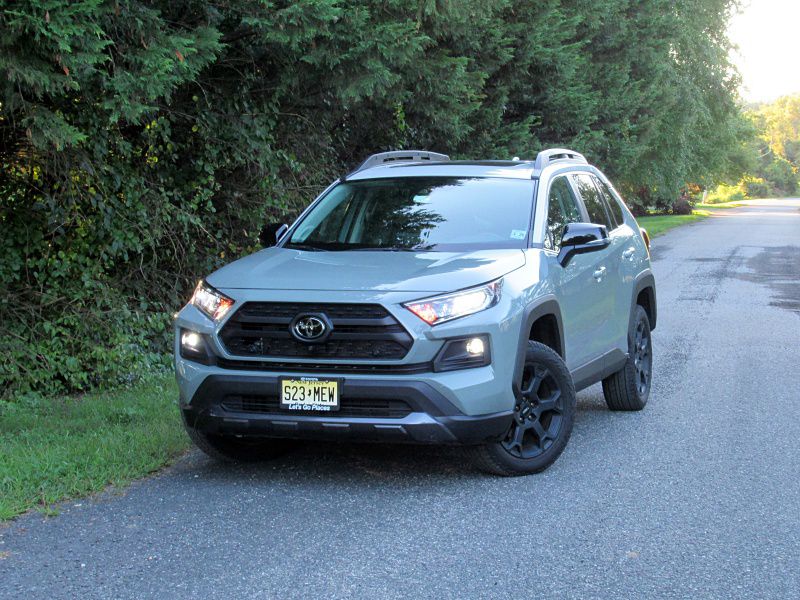
Photo by Brady Holt
Wide Range of Well-Equipped Models
The RAV4 is available in a wide range of models, including the RAV4 Hybrid and RAV4 Prime. Sticking with a gas engine, you start with the $26,250 LE, then upgrade to the XLE ($27,545) to add niceties like a power driver’s seat, automatic climate control, push-button starting, and alloy wheels. The XLE Premium ($30,050) adds leatherette, a power liftgate, and a moonroof. You can also get the off-road-focused Adventure ($33,355) and TRD Off Road ($35,980), or the best-equipped Limited ($34,780). All-wheel drive costs $1,400 extra on most models, while the hybrid (with AWD standard) is about another $800 on top of that — easily worth it for either the fuel savings or the superior driving experience. The RAV4 Prime costs $38,100, but a $7,500 federal tax credit brings that down to more reasonable levels.
Whichever RAV4 you pick is pretty well-equipped. A long list of advanced safety features includes adaptive cruise control, automatic emergency braking, and lane-keep assist, while most trim levels also include blind-spot monitoring. And every Toyota includes two years or 25,000 miles of free scheduled maintenance.
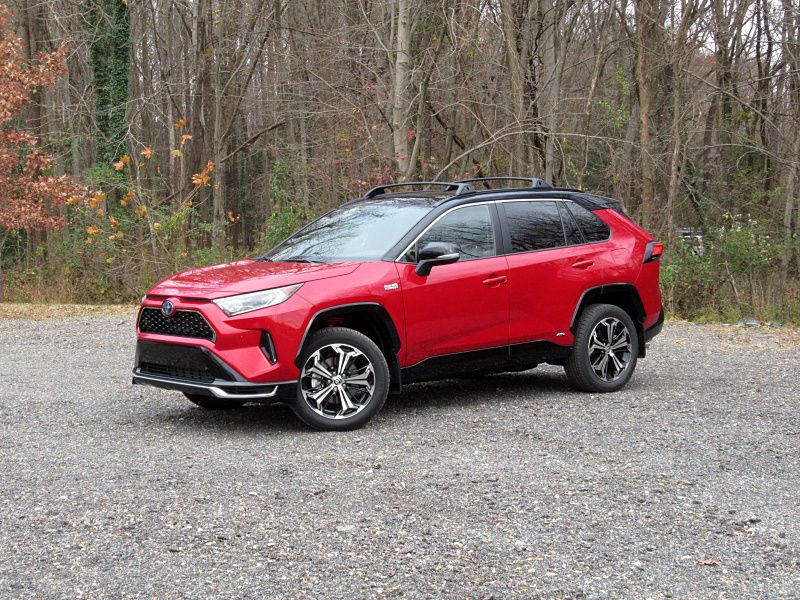
Photo by Brady Holt
Excellent Competitors
As good as the RAV4 is, it faces plenty of excellent competitors. For everyday use, the Honda CR-V and Nissan Rogue offer even roomier interiors and more agile handling. We’re also impressed with the smooth, quiet, comfortable Chevrolet Equinox; the extra-functional Subaru Forester; the sporty and well-finished Mazda CX-5; and the pleasant yet budget-priced Hyundai Tucson and Kia Sportage. And if you want a hybrid, you can shop the RAV4 against gas-electric versions of the Ford Escape and Honda CR-V.
Compared with most of these vehicles, the RAV4 has a noisier engine and a higher price, and several have more cargo space. But if you want something that does better off-road, you’d need a Jeep — and today’s Jeep crossovers tend to be either noisier, more expensive, less economical, or less roomy than the RAV4, or more than one of the above. Plus, every small crossover has its own drawbacks, from dated infotainment systems in the CR-V to sloppy handling in the Forester to disappointing gas mileage in the Tucson and Sportage, and so on.
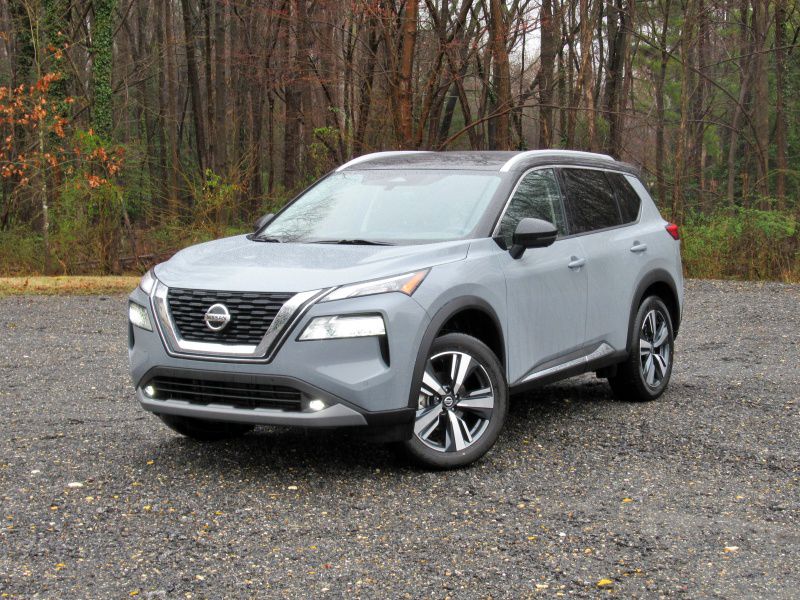
Photo by Brady Holt
A Solid Choice for the Right Buyer
The 2021 Toyota RAV4 splits the difference between an on-road and off-road vehicle. It’s focused on the former, which is where most buyers will spend their time. With a smooth ride, roomy cabin, and economical powertrains, it’s fully prepared to serve as a family hauler, commuter car, and errand-runner. But more than most small crossovers, it’s unafraid of some tougher conditions. We wouldn’t take it crawling over boulders, but the RAV4 inspires confidence that it will slog through snow and mud that would strand a competitor that’s closer to a tall station wagon.
If you do just want a tall station wagon, though, you might be happier with a crossover that’s less expensive, quieter, or roomier than the RAV4. But especially if the Toyota’s extra style and capability is something you value, and you don’t need something truly hardcore, you’ve come to the right place.
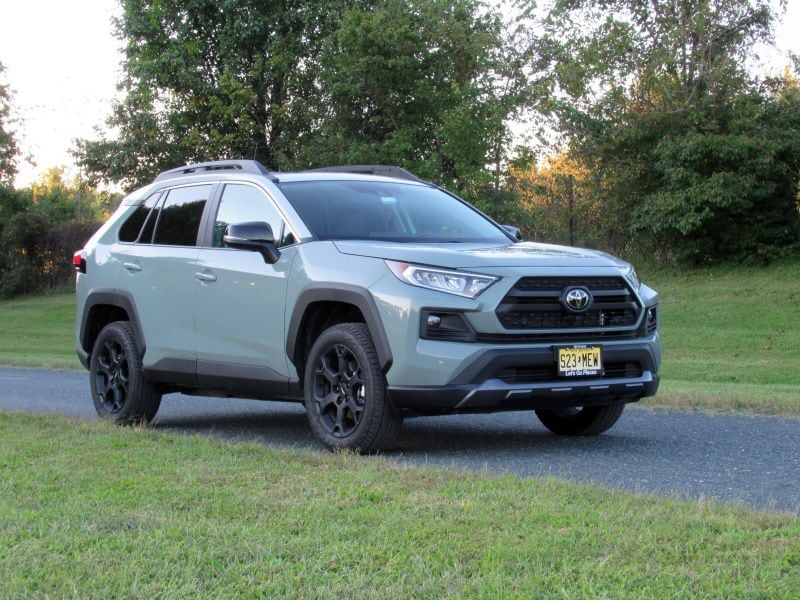
Photo by Brady Holt